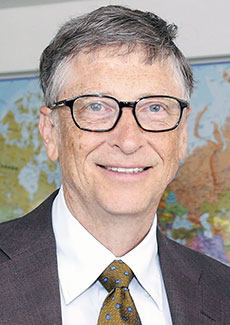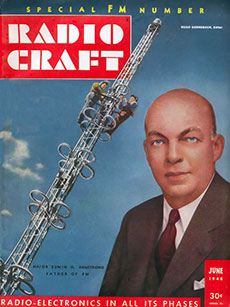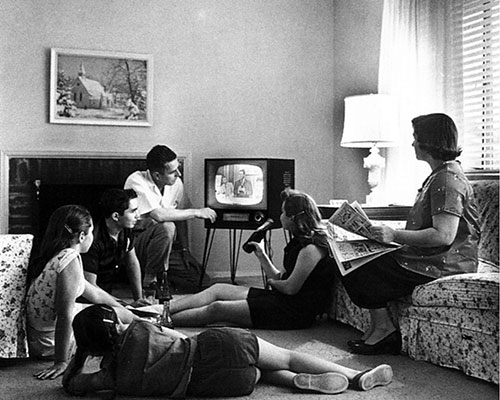A family gathers around the television in 1958. (Photograph by Evert F. Baumgardner, National Archives and Records Administration.)
Content is where I expect much of the real money will be made on the Internet, just as it was in broadcasting.
A Series Examining the Evolution of Local News
Part 3 of a 5-part series
This series examines the evolving and lasting role of local news reporting, effects of WHAV’s unique entrepreneurial approach in shaping a competitive market, intersection of cutting edge and traditional technologies, importance of looking back in order to move forward and a bold vision of the future that offers advantages for residents now.
By Tim Coco
President and General Manager
The rise of television during the 1950s coincided with the peak of the newspaper industry. During this new age, total circulation began its slow decline and many two-newspaper cities disappeared. Radio also faced the threat, but found a new heyday spinning the latest rock and roll records.
Radio and newspapers still offered certain advantages. They were largely the best sources of local news and also remained portable. Today, however, one is more likely to observe a patient in a physician’s waiting room reading news on a phone or tablet rather than from a newspaper or magazine. The Internet made other media portable and convenient too.
Both the print and broadcast media responded by going online and partially succeeded in keeping the audience’s eyes and ears. Absent the sunk costs of giant printing presses and expensive transmitters though, nimble entrepreneurs began to distract those same audiences with a flood of new offerings. With the resulting decline in revenues, many news organizations reduced content, made pages slow-loading with too many ads or, worse, put up “pay walls” to prevent too many stories from being delivered free.
‘Content is King’

Microsoft founder Bill Gates. (Photograph by DFID – UK Department for International Development.)
In other words, local news sources gave up their last remaining advantage—information the public desperately sought. It wasn’t as though they were not warned. Microsoft founder Bill Gates told them as early as 1996.
“Content is where I expect much of the real money will be made on the Internet, just as it was in broadcasting,” Gates wrote.
Radio began damaging itself too. First, the Telecommunications Act of 1996 allowed corporations to own hundreds of stations. Desirable local content was displaced in favor of homogenized national programming. The switch saved money and helped pay the artificially inflated prices of radio stations that previously had no buyers. Second, a new digital technology—HD Radio—reduced the audio fidelity of standard AM broadcasts and the reach of FM signals. The trade offs might have been worth it if consumers bought the expensive new radios, but largely they haven’t.
Marketers, not too long ago, had an easy job of it. To bring consumers into a local business or entice them to support a local charity, all one had to do was place an advertisement in the daily Haverhill Gazette and one on WHAV. In doing so, they would reach virtually the entire market. During the 2000s, however, fragmentation of the advertising market took hold. Businesses were forced to spend more on multiple media to reach the same or smaller audiences.
WHAV Brings Back the Audience
WHAV is bringing audiences back—five million page views monthly alone at WHAV.net—with content people want, but without the pay walls. It is also doing so by being media agnostic.
In other words, WHAV every day delivers the local news residents want, but also on their vehicles of choice—WHAV’s comprehensive local news website at WHAV.net; social media sites such as Facebook, Twitter, LinkedIn, Google Plus, Tumblr and more; cable television in Haverhill, Andover and Methuen, Mass., and Plaistow and Sandown, N.H. There’s audio, text and video.
Others make the claim they are “engaging” audiences with some of these media too. However, a recent analysis shows WHAV publishes 20 percent more content on Facebook, for example, than its largest competitor. Since WHAV doesn’t charge the public for access to its information, it uniquely has an incentive to publish everywhere freely.
Because WHAV has been streaming audio and video on the Internet since January, 2004—longer and more consistently than anyone else in the area—it has also developed best practices to reduce skips, stuttering and dropouts.
The Need for FM

Major Edwin H. Armstrong is the father of FM radio.
While WHAV already captures the largest, local audience ever assembled, what happens during times of emergency? During the December, 2008, ice storms, many households were without power for days. The few listeners with smartphones of the day tuned to WHAV which remained on the air. However, mobile phones require charging more often than traditional radios and many users are dependent on WiFi that may also be interrupted during power outages.
New technologies are fun, but radio is ubiquitous and ready during times of emergency.
“Traditional AM/FM radio, meanwhile, continues to reach the overwhelming majority of the American public – 91% of Americans ages 12 and older had listened in the week before they were surveyed in 2014, according to a Pew Research Center analysis of Nielsen Media Research data, essentially unchanged from 2013,” according to Pew’s “State of the News Media 2015” analysis.
Virtually every household has at least one battery-operated radio—if not several, counting the car.
Importantly, WHAV’s new FM radio station at 97.9 won’t rely on HD Radio technology. As noted above, the technology for the time being harms radio listening more than it helps it. WHAV plans to make a point of using the “Armstrong System,” offering high-fidelity sound compatible with all FM radios. The name refers to the original trademark of FM’s inventor, Major Edwin Howard Armstrong, who is buried just over the border in Merrimac.
State-of-the-art technology also plays vital behind-the-scenes roles at WHAV. WHAV’s Edwin V. Johnson employs a special intranet to better track local news sources, tools to simultaneous post news to on-air and online vehicles, digital recording and editing systems for quick turnaround of sound and easy online posting and sharing tools for use by readers and listeners.
Help WHAV “Make Waves” and Bring Local News to FM
 Tom Bergeron, honorary chairperson of WHAV’s “Make Waves” campaign, is asking for your help in raising at least $100,000 to put Haverhill’s own FM radio station on the air. A rare window of opportunity has opened that could put WHAV on FM sooner than anticipated, but it is dependent on your generosity. Please support the only Haverhill-based news source that’s always free with your donation by clicking here.
Tom Bergeron, honorary chairperson of WHAV’s “Make Waves” campaign, is asking for your help in raising at least $100,000 to put Haverhill’s own FM radio station on the air. A rare window of opportunity has opened that could put WHAV on FM sooner than anticipated, but it is dependent on your generosity. Please support the only Haverhill-based news source that’s always free with your donation by clicking here.
Tomorrow: Part 4: Looking Ahead with a Nod to the Past

